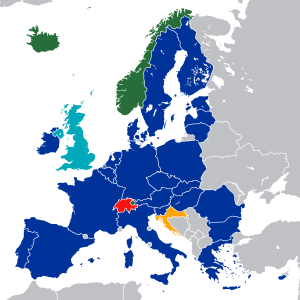Difference between revisions of "Main Page"
| Line 30: | Line 30: | ||
<h2 id="mp-dyk-h2" class="mp-h2">About CE Marking</h2> | <h2 id="mp-dyk-h2" class="mp-h2">About CE Marking</h2> | ||
<div id="mp-dyk"> | <div id="mp-dyk"> | ||
{{CE marking}} | |||
</div> | </div> | ||
| class="mp-bordered mid-table" | | | class="mp-bordered mid-table" | | ||
Revision as of 17:49, 22 March 2022
About usHow we help manufacturers, distributors and importers: We offer consulting on CE marking to manufacturers, distributors and importers. This also includes:
How we help customers: In addition to indirectly helping consumers by offering advice to manufacturers to market safe products, we provide support to consumers by providing them with information about the meaning of the CE marking and useful advice on how to choose compliant and therefore safer products. About CE MarkingThe CE marking is a mandatory process required by law by the specific Directives of the European Community (EC Directives) to be able to market, import and / or distribute the categories of products indicated in the same directives within the European Economic Area (EEA), regardless of where the product was manufactured. More precisely, CE marking rules are mandatory in:
This means that both manufacturers and distributors are obliged to follow this process, called "CE marking", which is aimed at ensuring that the products in question are "safe" for the final consumer. Regulated products also include: electrical and electronic equipment (EEE), radio and telecommunications equipment, machines and assemblies of machines, medical devices, toys, building materials, fixtures, pressure vessels, gas appliances, safety devices, etc. The CE marking, unlike what the name might suggest, is a particularly articulated process, which goes beyond the mere compilation of a technical file or the affixing of the so-called "CE mark" on the product label. It includes in fact a necessary analysis of the safety risks, evaluation of results, identification and adoption of technical and organizational security measures, periodic review of information relating to the safety of the product and of each individual component, etc. Added to this is compliance with certain international standards ("harmonised standards"), and often also the intervention of a notified body (NB) and the carrying out of laboratory tests on the product to guarantee its safety characteristics. Be aware that the mere affixing of the CE mark without complying with all the other obligations constitutes a crime and seriously endangers the safety of consumers and beyond. At this regard, our team is ready to help manufacturers and customers in order to better understand CE marking process and to give consultancy services when needed.
|
BlogThe first question many manufacturers ask before starting a CE marking consulting is: “Does my product need to be CE marked?" To this question, one would expect an immediate "YES" or "NO", but the answer cannot be so simple. Precisely for this reason, the so-called “Identification of the Applicable Legislation”, which also answers this question, is a phase to be carried out compulsorily by law in the context of CE marking. In other words, regardless of whether your product requires CE marking or not, an initial Identification of the Applicable Legislation must always be carried out. Moreover, even if the initial Identification of the Applicable Legislation reveals that your product does not have to be CE marked, in any case it must comply with the obligations of the General Product Safety Directive (GPSD), so it is always good to rely on a consultant to have assistance about your product safety. The consultant, depending on the case, will provide you with support for the CE marking (if the answer is "CE marking yes") or for the general safety of the product (if the answer is "CE marking no").
Selection of our clients
|
Our services
Contacts




